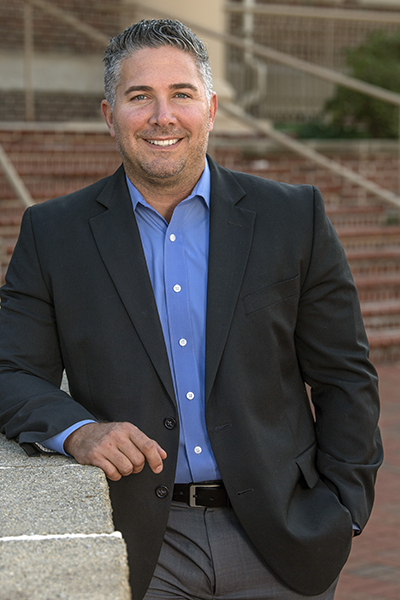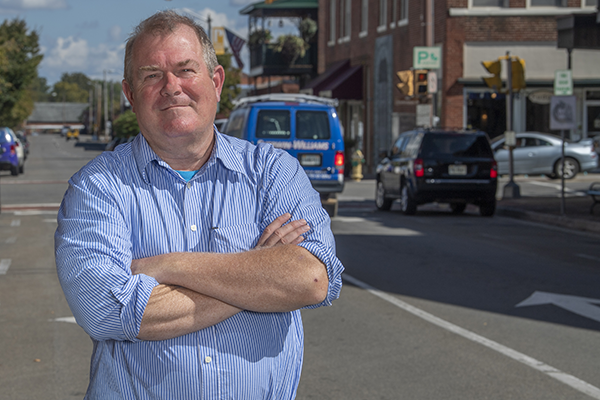It wasn’t the work that proved too much for Jean Jackson. It was the drive home.
Even though cataracts had begun clouding her eyes, she felt capable of doing her job as an inspector of prepared pasta at the Nestlé refrigerated foods plant in Danville. But after she’d finished her shift, it would be dark by the time she got behind the wheel to go home. And on the road the cataracts turned oncoming headlights into blinding flashes.
Jackson had health insurance through her job but says doctors told her the cataracts were not severe enough for insurance to cover.
Worries about causing an accident led Jackson to take early retirement two years ago, at age 62. She now gets $924 a month in Social Security. Had she held on and retired at 66 as she had planned, she says, she would be receiving more than twice that.
When Jackson left her job, she also joined the 13% of Danville residents and 10% of Virginians without medical insurance. She resigned herself to limited vision. Her other health issues, such as diabetes, went largely untreated.
Then, this year, Medicaid expansion came to Virginia. Jackson was among the first in the state to enroll. Earlier this year, doctors removed her cataracts.
“It’s a whole new day,” she exults.
Questions remain
Jackson’s recovered vision is the sort of outcome proponents of Medicaid expansion had in mind when they argued that Virginia could not afford to continue its longstanding policy of offering Medicaid only to a few thousand of its poorest citizens.
But as the state’s businesses and workers forge ahead into this new world of public health, a lot of questions remain in Medicaid expansion’s first year. Will hospitals and health-care organizations see the benefits they and many economists projected? Will the state create a healthier, more productive workforce?
Under the expansion passed by the General Assembly last year, people can enroll in Medicaid if they earn up to 138% of the federal poverty level — $17,236 for individuals (roughly equivalent to working full time at $8.62 an hour) and $29,435 for a family of three. Virginia had been operating under one of the nation’s most restrictive Medicaid systems, ranking 46th in per-capita Medicaid spending by states in 2018, according to a study by the state Joint Legislative Audit and Review Commission (JLARC).
The commonwealth’s Medicaid expansion law took effect Jan. 1. As of late July, more than 300,000 of the estimated 400,000 adult Virginians eligible for Medicaid expansion had enrolled, according to the state Department of Medical Assistance Services (DMAS). (Another 330,000 uninsured Virginians are not eligible for Medicaid, even with the expansion.)
Economists say it’s too early to tell the overall impact of Medicaid expansion. “It would likely take a few years of data before [the impact] could be fully evaluated,” says Terance J. Rephann, a regional economist with the University of Virginia’s Weldon Cooper Center for Public Service, who has studied Medicaid expansion.
Nonetheless, the potential for a better bottom line seems to be inspiring the state’s leading hospital chains to go on a building spree.
Under pressure
In recent years Virginia’s hospitals have been working on tight margins. A February analysis by the Virginia Hospital and Healthcare Association found 48% of Virginia hospitals had operating profit margins in 2017 at or below 4%, and 22% operated at a deficit. The issue was particularly acute among Virginia’s rural hospitals, with 57% operating in the red.
Virginia’s acute-care hospitals provided about $1.1 billion in uncompensated care in 2017, according to a report prepared for DMAS and released this July by the Health Behavior and Policy division of Virginia Commonwealth University’s School of Medicine. That came to 5.9% of total operating costs, compared with about 4% for hospitals nationally.
Using other states’ experience with Medicaid expansion as models, the VCU study’s authors calculate that Virginia hospitals could see uncompensated costs decline after Medicaid expansion by $290 million to $480 million — a 26% to 43% reduction.
In a separate report, Virginia Health Information, the state agency tracking health-care data, said Virginia’s 73 acute-care hospitals valued their uncompensated charity care at $2.56 billion. The agency calculated the actual cost of that care to hospitals at $736 million.
However it’s figured, uncompensated care “obviously puts a lot of financial pressure” on hospitals, says Donald B. Halliwill, CFO of Carilion Clinic. The Roanoke-based nonprofit operates more than 200 clinics, hospitals and other medical offices in Southwest Virginia.
Changing financial picture
In Virginia, Medicaid will reimburse hospitals for 71% of enrollees’ care in the first phase of expansion, rising to 88% soon after.
That change in financial realities has given Carilion confidence to forge ahead with a $300 million expansion to Roanoke Memorial Hospital, Halliwill says. The project is part of Carilion’s planned $1 billion investment in capital improvements.
While it’s not the only driver, “Medicaid expansion and the positive impact from that … has allowed us to feel more comfortable that we can make those reinvestments,” Halliwill adds.
Similarly, Inova Health System, based in Fairfax, is pushing forward with a $300 million upgrade to its Loudoun County hospital. In June, Inova announced an agreement with Optima Health to increase access to its network by Medicaid patients, whom the companies say total 274,000 in Northern Virginia.
Under the expansion plan brokered last year by state legislators and hospital chains, which falls under the federal Affordable Care Act, the U.S. government will pay 90% of the cost of health care for those Virginians insured under Medicaid, or about $2.4 billion. Virginia’s 10% share will be covered by new assessment fees — a tax, essentially — on hospital revenues.
In the expansion deal, 69 private acute-care hospitals are footing the bill for the state government’s share of Medicaid (specialized hospitals such as children’s, psychiatric and rehabilitation-care centers are exempt; so are medical centers operated by Virginia Commonwealth University and the University of Virginia).
This year, the assessed hospitals will pay the state an estimated $281 million. In 2021 the assessments will come to $763 million.
Even with that extra cost, expansion will bring hospitals $2 in additional revenue for every dollar they pay the state under the assessment plan, DMAS Director Jennifer Lee told the state Senate Finance Committee in May. After paying the state assessments in 2021, the hospitals will record a net increase of $1.6 billion in Medicaid reimbursements, Lee said.
Last year Bon Secours Virginia Health System, which operates seven hospitals in the commonwealth, treated 44,000 nonpaying patients at a cost of $200 million, says Rhodes B. Ritenour, the nonprofit’s vice president for external and regulatory affairs.
“It was unsustainable in the long term,” Ritenour says. “Now we are going to be reimbursed for a lot of that care.”
Building on expansion
While he cautions that “it’s too early to tell” what impact the change in reimbursements will have, Ritenour notes that having a way to offset at least some expenses for charitable care has encouraged Bon Secours to invest $77 million in a new 75,000-square-foot hospital and health complex in Suffolk.
In February, Bon Secours announced plans to spend $119 million expanding its St. Francis Medical Center in Chesterfield County, adding 55 patient beds. It’s also proposed building a new emergency care and imaging center on the campus of John Tyler Community College in Chesterfield.
With Medicaid funds now available, expansions and upgrades are easier for the organization to pursue, Ritenour says. “It gives us leeway.”
The Health Wagon, which runs stationary and mobile free clinics in Southwest Virginia, recently opened a new clinic just for Medicaid-enrolled patients in Coeburn, a town in Wise County.
Community health centers in Southern and Southwest Virginia are able to expand their operations because they have more paying patients, says Deborah Oswalt, executive director of the Virginia Health Care Foundation. More insurance providers are entering these regions, which had the highest rates of uninsured adults in the state, because it’s now financially viable, she adds.
As for Jean Jackson, now that she can see clearly again, she is not planning on going back to the Nestlé plant. Instead she is throwing herself into volunteering with Mothers Stronger Twogether, a group she helped found to combat gun violence. Danville has one of the highest per-capita crime rates in Virginia, and murder claimed the lives of Jackson’s son, grandson, sister and nephew.
With her cataracts gone, Jackson says she is more able to do the group’s work such as helping calm crowds at crime scenes. “I can get up,” she explains, “and go.”



 Over the last three years, advised by their mentor, local real estate developer and entrepreneur Steve Critchfield, the Crew has leveraged federal development grants and historic tax credits into a portfolio of 15 single-family rental properties valued at over $1 million.
Over the last three years, advised by their mentor, local real estate developer and entrepreneur Steve Critchfield, the Crew has leveraged federal development grants and historic tax credits into a portfolio of 15 single-family rental properties valued at over $1 million.